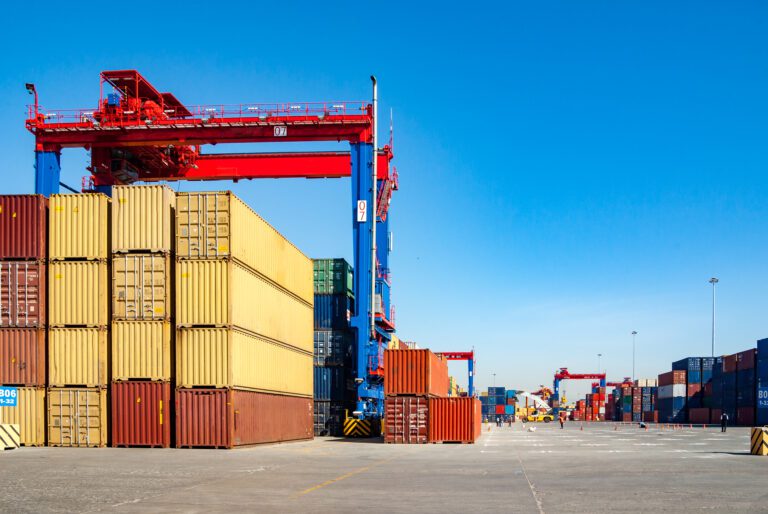
Key Takeaways
- The top US exports include machinery, technology, energy resources, and agricultural goods.
- Canada, Mexico, China, and the EU are the leading global trade partners of the U.S.
- Trade agreements like USMCA and WTO frameworks shape U.S. export opportunities.
- Market trends and global demand fluctuations directly affect US exports.
- Exporters must navigate logistics, tariffs, and regulatory hurdles to succeed internationally.
In an increasingly interconnected world, the United States remains one of the most influential players in international trade. As a global economic powerhouse, the U.S. exports a wide range of goods to nearly every corner of the globe. Understanding the top US exports and identifying the most important global trade partners offers valuable insight for businesses aiming to grow internationally, streamline logistics, and navigate global markets with confidence.
What is the U.S. Export Strength?
The United States is the second-largest exporter in the world, trailing only China. In 2023, U.S. exports of goods totaled over $2 trillion, supporting millions of jobs and contributing significantly to national GDP. The diversity of US exports spans multiple sectors, reflecting the country’s robust manufacturing base, technological innovation, and agricultural abundance.
Top Categories of U.S. Exports
1. Machinery and Industrial Equipment
One of the leading top US exports, machinery—including engines, pumps, and construction equipment—is in high demand across global markets. These products are essential for manufacturing, infrastructure development, and automation in both developed and emerging economies.
2. Technology and Electronics
From semiconductors and integrated circuits to telecommunications equipment and aerospace technology, U.S. tech exports power the digital infrastructure of many countries. High-tech products are not only revenue drivers but also strategic assets, influencing global competitiveness and national security.
3. Energy Resources
The United States has rapidly transformed into a net exporter of energy, thanks to advancements in shale extraction and liquefied natural gas (LNG) infrastructure. Crude oil, natural gas, and petroleum products now make up a significant portion of US exports, particularly to energy-hungry nations in Asia and Europe.
4. Agricultural Products
The U.S. is a global leader in agricultural exports, including soybeans, corn, wheat, cotton, and meat. These products play a crucial role in feeding the world, and American farmers benefit from international demand, especially in regions facing food insecurity or limited arable land.
5. Vehicles and Aircraft
U.S.-made cars, trucks, and aircraft are recognized for their quality and innovation. Aerospace exports, led by companies like Boeing, remain strong contributors to the export economy despite recent industry disruptions.
Key Global Trade Partners of the U.S.
Canada
Canada is consistently the United States’ largest trading partner. Proximity, shared infrastructure, and cultural similarities make Canada an ideal destination for American goods. The United States-Mexico-Canada Agreement (USMCA), which replaced NAFTA, further streamlined trade, reduced tariffs, and encouraged cross-border investment.
Key exports to Canada include:
- Automobiles and parts
- Machinery
- Petroleum products
- Agricultural goods
Mexico
Mexico is another top trading partner and a critical part of North American supply chains. Manufacturing integration between the U.S. and Mexico facilitates the seamless movement of components, particularly in the automotive, electronics, and textile industries.
Top exports to Mexico:
- Machinery and electrical equipment
- Refined petroleum
- Plastics
- Grains and other agricultural products
China
Despite a complicated trade relationship, China remains one of the U.S.’s largest export destinations. While tariffs and geopolitical tensions have reshaped trade dynamics, mutual demand for goods like soybeans, aircraft, and semiconductors continues to drive engagement.
Key exports to China:
- Agricultural products (especially soybeans)
- Semiconductors
- Medical instruments
- Vehicles and machinery
European Union (EU)
The EU, as a collective, is a major economic ally. Trade with EU nations supports numerous industries, from aerospace to pharmaceuticals. Regulatory alignment and ongoing negotiations around digital trade and environmental standards influence future export opportunities.
Top exports to the EU include:
- Aircraft and aerospace components
- Pharmaceuticals
- Industrial machinery
- Chemicals and medical devices
Trade Agreements and Market Dynamics
Trade agreements serve as the foundation for many US exports. Agreements such as USMCA, the World Trade Organization (WTO) rules, and bilateral deals with nations like South Korea and Japan provide a framework for reducing trade barriers and improving market access.
However, the global trade environment is evolving. Protectionist measures, supply chain disruptions, and geopolitical instability are reshaping the traditional flow of goods. Exporters must stay agile and informed to navigate:
- Tariff fluctuations
- Export controls (especially on tech goods)
- Shifting consumer preferences
- Sustainability and environmental compliance
Challenges for U.S. Exporters
While the U.S. has a strong export infrastructure, businesses still face challenges such as:
- Complex customs regulations in target markets
- Currency exchange rate volatility
- Logistics and supply chain bottlenecks
- Political risks in emerging economies
Partnering with experienced freight forwarders and logistics providers like Allison Shipping can help exporters mitigate these challenges, ensuring that shipments arrive on time, on budget, and in compliance with all regulations.
Opportunities for Business Growth
Businesses looking to expand internationally can leverage the strength of top US exports and explore new partnerships with emerging markets in Africa, Southeast Asia, and Latin America. These regions are showing increased demand for food, clean energy, industrial tools, and digital technology—areas where U.S. expertise and products shine.
By understanding the needs of key global trade partners, investing in supply chain resilience, and optimizing export strategies, companies can unlock long-term growth in the global marketplace.
Positioning for Global Success
Exporting is not just a transaction—it’s a strategic move that connects American innovation and resources with global demand. The US exports market is vast and diverse, and its success is closely tied to relationships with key partners like Canada, Mexico, China, and the EU. Despite trade challenges, there is abundant opportunity for businesses to scale internationally with the right insights, support, and strategy.
At Allison Shipping, we specialize in helping exporters navigate the complexities of global logistics. From customs compliance to freight coordination, our expert team ensures your products reach international customers efficiently and reliably. Whether you’re new to exporting or expanding into new regions, we’re here to be your logistics partner for success.
Contact us today to learn how we can support your global trade goals.


